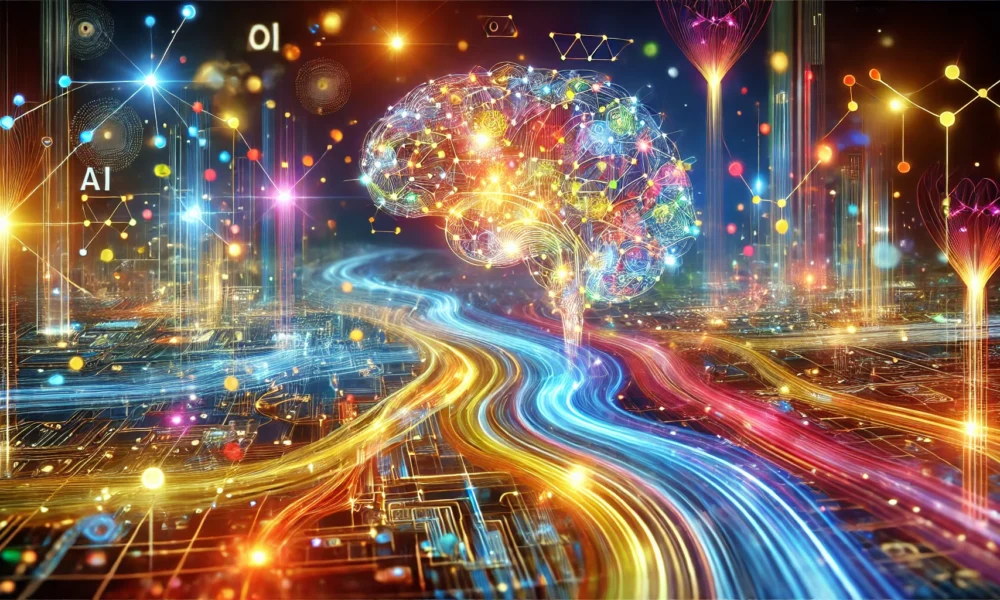AI Revolutionizing Knowledge Discovery: From Keyword Search to Deep Research
The Evolution of AI in Knowledge Discovery
Over the past few years, advancements in artificial intelligence have revolutionized the way we seek and process information. From keyword-based search engines to the emergence of agentic AI, machines now have the ability to retrieve, synthesize, and analyze information with unprecedented efficiency.
The Early Days: Keyword-Based Search
Before AI-driven advancements, knowledge discovery heavily relied on keyword-based search engines like Google and Yahoo. Users had to manually input search queries, browse through numerous web pages, and filter information themselves. While these search engines democratized access to information, they had limitations in providing users with deep insights and context.
AI for Context-Aware Search
With the integration of AI, search engines began to understand user intent behind keywords, leading to more personalized and efficient results. Technologies like Google’s RankBrain and BERT improved contextual understanding, while knowledge graphs connected related concepts in a structured manner. AI-powered assistants like Siri and Alexa further enhanced knowledge discovery capabilities.
Interactive Knowledge Discovery with Generative AI
Generative AI models have transformed knowledge discovery by enabling interactive engagement and summarizing large volumes of information efficiently. Platforms like OpenAI SearchGPT and Perplexity.ai incorporate retrieval-augmented generation to enhance accuracy while dynamically verifying information.
The Emergence of Agentic AI in Knowledge Discovery
Despite advancements in AI-driven knowledge discovery, deep analysis, synthesis, and interpretation still require human effort. Agentic AI, exemplified by OpenAI’s Deep Research, represents a shift towards autonomous systems that can execute multi-step research tasks independently.
OpenAI’s Deep Research
Deep Research is an AI agent optimized for complex knowledge discovery tasks, employing OpenAI’s o3 model to autonomously navigate online information, critically evaluate sources, and provide well-reasoned insights. This tool streamlines information gathering for professionals and enhances consumer decision-making through hyper-personalized recommendations.
The Future of Agentic AI
As agentic AI continues to evolve, it will move towards autonomous reasoning and insight generation, transforming how information is synthesized and applied across industries. Future developments will focus on enhancing source validation, reducing inaccuracies, and adapting to rapidly evolving information landscapes.
The Bottom Line
The evolution from keyword search to AI agents performing knowledge discovery signifies the transformative impact of artificial intelligence on information retrieval. OpenAI’s Deep Research is just the beginning, paving the way for more sophisticated, data-driven insights that will unlock unprecedented opportunities for professionals and consumers alike.
-
How does keyword search differ from using AI for deep research?
Keyword search relies on specific terms or phrases to retrieve relevant information, whereas AI for deep research uses machine learning algorithms to understand context and relationships within a vast amount of data, leading to more comprehensive and accurate results. -
Can AI be used in knowledge discovery beyond just finding information?
Yes, AI can be used to identify patterns, trends, and insights within data that may not be easily discernible through traditional methods. This can lead to new discoveries and advancements in various fields of study. -
How does AI help in redefining knowledge discovery?
AI can automate many time-consuming tasks involved in research, such as data collection, analysis, and interpretation. By doing so, researchers can focus more on drawing conclusions and making connections between different pieces of information, ultimately leading to a deeper understanding of a subject. -
Are there any limitations to using AI for knowledge discovery?
While AI can process and analyze large amounts of data quickly and efficiently, it still relies on the quality of the data provided to it. Biases and inaccuracies within the data can affect the results generated by AI, so it’s important to ensure that the data used is reliable and relevant. - How can researchers incorporate AI into their knowledge discovery process?
Researchers can use AI tools and platforms to streamline their research process, gain new insights from their data, and make more informed decisions based on the findings generated by AI algorithms. By embracing AI technology, researchers can push the boundaries of their knowledge discovery efforts and achieve breakthroughs in their field.


